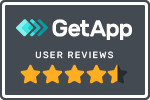Cutting Costs Without Cutting Corners: Smart Facility Management for Nursing Homes

In the nursing home and residential care sector, maintaining a clean, safe, and well-functioning facility is not just a matter of aesthetics, it directly impacts the health and well-being of residents. Unlike traditional hospitality environments, nursing homes have stringent health and safety regulations, increased infection control needs, and a duty of care that demands immediate responsiveness. Balancing these operational requirements with budget constraints can be challenging, but with smart facility management strategies, nursing homes can cut costs without compromising on care quality.
The High Stakes of Facility Management in Nursing Homes
Managing a nursing home or residential care facility involves more than routine housekeeping and repairs. These facilities operate in a high-risk environment where neglected maintenance, sanitation failures, or delayed repairs can lead to serious health consequences for residents.
Some of the key challenges in nursing home facility management include:
- • Ensuring a safe and clean environment – Preventing falls, maintaining hygiene, and keeping facilities hazard-free.
- • Operational efficiency – Coordinating across multiple departments, from nursing to maintenance.
- • Timely response to urgent issues – Addressing mobility-related hazards, equipment failures, and safety concerns in real-time.
- • Compliance and regulatory demands – Meeting strict health, fire safety, and infection control standards.
- • Budget constraints – Managing high capital expenses and labor costs while ensuring high standards of care.
Smart facility management can help tackle these pain points while optimizing costs. Here’s how:
1. Implementing Preventative Maintenance to Reduce Costs
Emergency repairs are costly and disruptive, often leading to resident discomfort or safety risks. A preventative maintenance program ensures that critical assets, such as HVAC systems, plumbing, and medical equipment are regularly inspected and maintained, reducing the likelihood of expensive breakdowns.
Benefits of Preventative Maintenance:
- • Reduces unexpected repair costs.
- • Minimizes equipment downtime and disruptions to resident care.
- • Extends the lifespan of essential facility assets.
- • Enhances compliance by keeping records of inspections and repairs.
How to Get Started:
- • Create a digital maintenance schedule using tools like Snapfix to track servicing of HVAC, plumbing, electrical systems, and emergency generators.
- • Use a task management system to assign responsibilities and ensure completion.
- • Automate reminders for inspections to avoid missed check-ups.
2. Enhancing Housekeeping Efficiency for Better Infection Control
Housekeeping in a nursing home is not just about tidiness, it’s a frontline defense against infections. Infection prevention and control (IPC) measures are critical, particularly in light of COVID-19 and seasonal outbreaks of flu and norovirus.
Key Strategies for Cost-Effective Housekeeping:
- • Standardized cleaning protocols – Use digital checklists to ensure no step is overlooked.
- • Digital tracking of cleaning schedules – This ensures high-risk areas like bathrooms, kitchens, and communal spaces are sanitized frequently.
- • Efficient use of labor – Streamline staff scheduling and task assignments to prevent unnecessary overtime.
Digital tools can help nursing homes maintain consistent cleaning records for compliance and accountability.
3. Leveraging Smart Technology for Streamlined Operations
Many nursing homes still rely on outdated paper logs and manual record-keeping for maintenance, housekeeping, and compliance tracking. Digital facility management solutions help automate these processes, ensuring efficiency and accuracy.
How Snapfix can Help:
- • Photo-based issue reporting – Staff can immediately log maintenance issues using their mobile phone, ensuring speedy resolutions. Photos/videos of issues can also help overcome language barriers, allowing staff of different backgrounds to communicate maintenance needs clearly and efficiently.
- • Automated compliance tracking – Digital records ensure adherence to regulatory requirements.
- • Real-time communication – Instant alerts improve coordination between maintenance, nursing, and housekeeping teams.
Digitizing maintenance operations can reduce costs and time spent on administration, while improving response times. For nursing homes, this translates to better resident care and safer environments.
4. Improving Staff Productivity and Reducing Burnout
Nursing homes face significant staffing challenges, including high turnover rates and staff burnout. With limited personnel, efficiency is key.
Ways to Optimize Workforce Efficiency:
- • Use digital task assignments – Clearly defined roles and responsibilities prevent confusion.
- • Automate routine inspections and checklists – This reduces manual paperwork and allows staff to focus on resident care. Snapfix customers have reported reducing time spent on admin by up to 80%.
- • Encourage cross-department collaboration – Better communication between maintenance and care teams leads to faster problem resolution.
By reducing the administrative burden, staff can spend more time focusing on residents rather than paperwork or chasing down maintenance requests.
5. Meeting Compliance Requirements Without Extra Administrative Burden
Regulatory compliance in nursing homes is non-negotiable. From fire safety checks to infection control audits, documentation is critical. A smart facility management system can automate compliance tracking, making it easier to prepare for inspections.
Compliance Best Practices:
- • Maintain a digital log of all maintenance and safety checks to provide auditors with real-time data.
- • Implement standardized reporting processes for staff to flag compliance risks.
- • Ensure all team members receive regular compliance training to stay updated on regulations.
Failure to meet compliance standards can result in hefty fines or even facility closure. Digital solutions help nursing homes stay ahead of regulatory demands without additional administrative burdens.
Conclusion: A Well-Managed Facility Leads to Better Resident Care
Cutting costs in a nursing home doesn’t mean cutting corners, it means optimizing processes to enhance safety, efficiency, and compliance while staying within budget. Preventative maintenance, digital tracking, smart housekeeping protocols, and staff efficiency tools are all essential components of a cost-effective facility management strategy.
By embracing smart technology and streamlined processes, nursing homes can ensure that residents receive the best possible care in a well-maintained, safe, and compliant environment.
Want to learn more about how technology can help nursing homes improve operations?
Book a demo with one of our product experts to discover how Snapfix can work for you.



